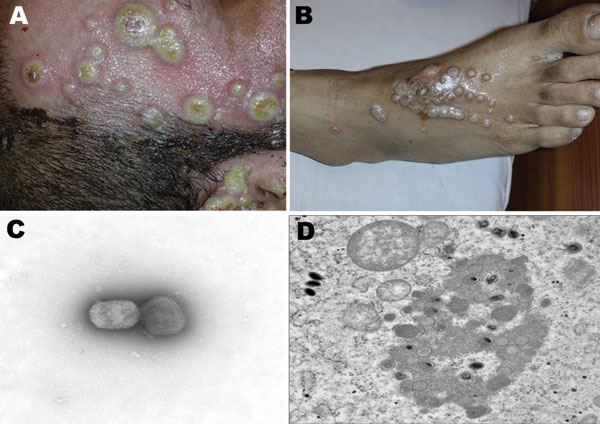Volume 13, Number 6—June 2007
Dispatch
Nosocomial Buffalopoxvirus Infection, Karachi, Pakistan
Figure 1

Figure 1. Nosocomial buffalopoxvirus infection of patients in burns units. A) Lesions involving intact skin around a burn wound and the wound itself. B) Lesions around an insertion site for an intravenous line. C) Orthopoxvirus particles detected by electron microscopy (EM) examination of negatively stained grids prepared from pustular material (magnification ×73,000). D) Transmission EM examination of ultrathin sections of infected Vero cell cultures showing classic intracytoplasmic orthopoxvirus factories and maturing virus particles (magnification ×21,000).
Page created: June 24, 2010
Page updated: June 24, 2010
Page reviewed: June 24, 2010
The conclusions, findings, and opinions expressed by authors contributing to this journal do not necessarily reflect the official position of the U.S. Department of Health and Human Services, the Public Health Service, the Centers for Disease Control and Prevention, or the authors' affiliated institutions. Use of trade names is for identification only and does not imply endorsement by any of the groups named above.